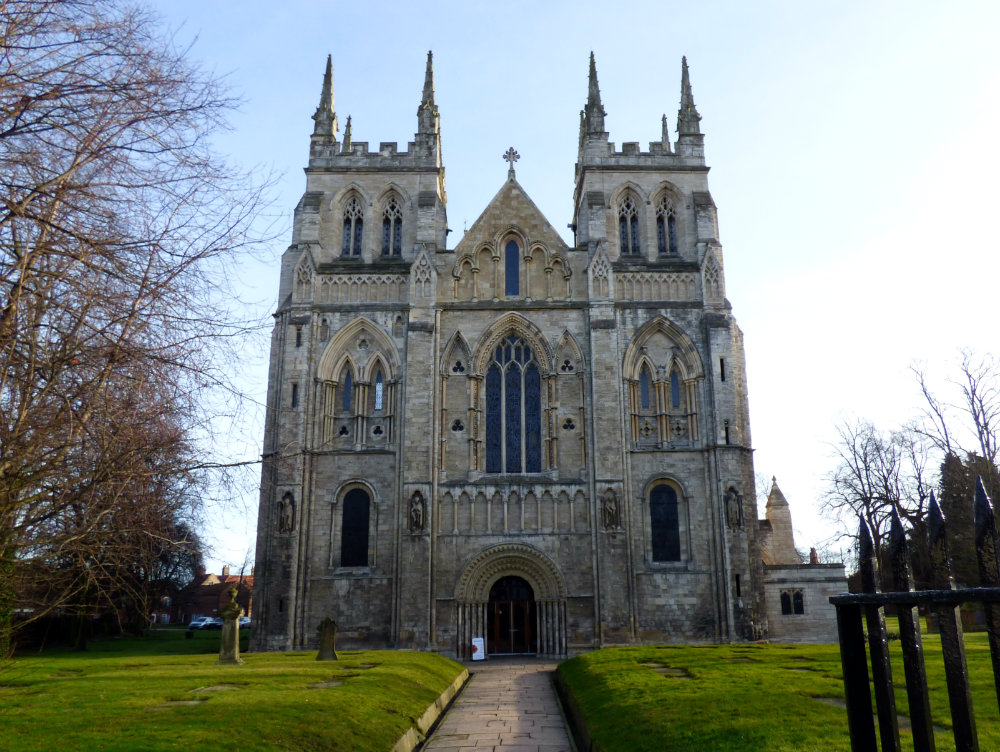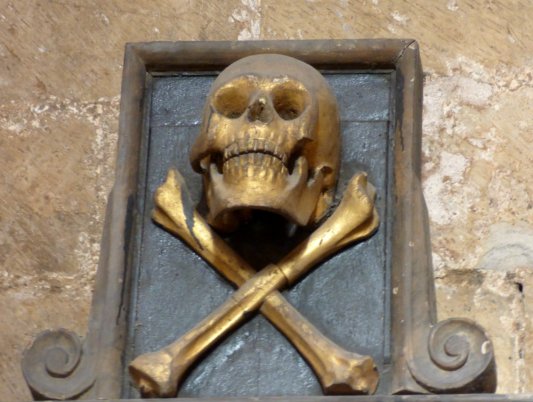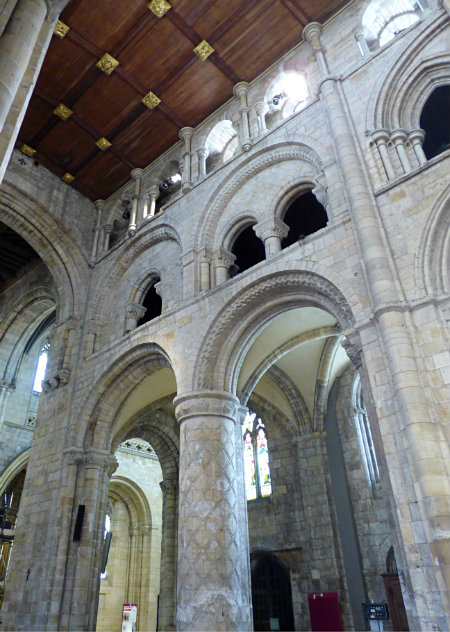
The Anglo-Saxon Chronicle of 779 AD mentions a settlement called Seletun. Archaeological remains show it to have been first settled by the Vikings and there was an extensive Roman presence. Today the little town of Selby still straddles the banks of the Ouse in the West Riding of Yorkshire. These days, since the reordering of the counties, it belongs officially to North Yorkshire, but the less said about governmental interference with our Ridings the better. The Ridings themselves cannot be changed by the transience of politics. There are three Ridings …from Thirdings, it is thought… North, West and East; we dispensed with the south. The Ridings meet in the Vale of York… the Ainsty.
***

To be fair, Selby Abbey isn’t actually a cathedral, just a normal Parish Church, though I know many a parish church that would fit comfortably within the walls of its vestry, and many a cathedral that would be dwarfed by its size and magnificence. I had been there before, long, long ago, before I had any real knowledge and no understanding of anything other than the beauty I found within its walls.
***

Still, the memory is a fond one. I had been taken by my grandparents when we had gone to visit great grandmother. She had gone blind one day on her way to work one day… already well past retirement age, of course… and was being cared for in Selby. I remember a few things from that early visit… like the Stars and Stripes and the story of the Maundy Money which Grandma Annie told me outside the south door of the Abbey, showing me where the queen had stood.
***

So, although I had been inside the church before that was more than forty years ago and I knew little of what to expect. The exterior I knew well by sight, but again, I’d had insufficient knowledge to form any understanding of it back then. Seeing its beauty was enough for the youngster. Coming back armed with greater knowledge to something I had thought familiar was an object lesson in the errors of preconception and a graphic reminder that the more knowledge we bring to anything we do, the wider the gates of understanding will stand open to allow us to pass within.
***

Standing at the gate we saw a beautiful building… obviously Norman going by the intricacy of the carved arch of the West Door and the weathering of the stonework. Even if it proved to be a restoration, the proportions were ‘right’. It had always been there. The whole frontage suddenly becomes an inventory of periods based on the shape of the towers and the windows, the arches and columns and you begin to read its story in its very fabric as you approach. The lower tier is Norman, almost a thousand years old. The next tier medieval Early Gothic, the towers, rather short and square, are Victorian. It had the feel of George Gilbert Scott’s hand in it too… and that proved to be correct. We have seen much of his work on our travels.
***

It seems incredible that only a couple of years ago, before Stuart and I began our adventures with the books, our knowledge had been somewhere between rudimentary and non-existent. We are by no means experts… that would take a lifetime apiece… but we have been privileged to learn a good deal on our wanderings.
***

The church was founded in 1069 as a Benedictine Abbey and built by the de Lacy family. Not an easy build, as like the great Minster at York the foundations rest on just three feet of sand above the water table. The builders had to let the structure settle onto wooden beams sunk into the unstable ground. Unsurprisingly parts of the building collapsed in the seventeenth century causing extensive damage and reconstruction. What is more surprising is that, given the unpromising instability of the ground, the great church stood undamaged for half a millennium. A fire destroyed many of the monastic buildings in 1340 and caused damage to the church which was rebuilt.
***

The church itself survived the Dissolution of the Monasteries in the 16th century, though most of the monastic buildings are now gone. In 1618 it became the Parish Church for the town. A fire caused a huge amount of damage in 1906, melting a peal of bells in the tower with the heat. Somehow, due to the diligence of the firemen, the great, medieval East Window survived in all its glory. The reconstruction and restoration of the church was begun yet again and what remains can, perhaps, be called a testament to Yorkshire grit… that stubborn determination that rolls up its sleeves and refuses to surrender. What remains is something very special…
***




You must be logged in to post a comment.